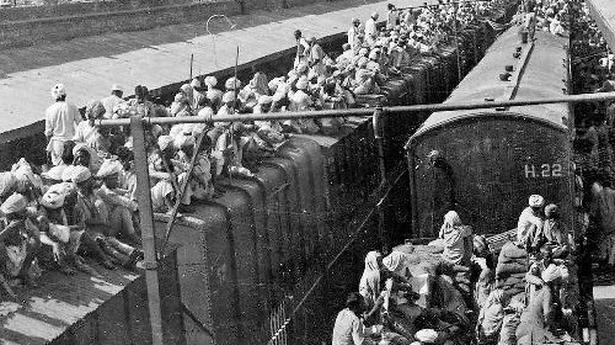
Partition and the heavy bangle of history
The Hindu
India and Pakistan follow different versions of the history of Partition. Moving forward collectively is still best achieved through individual stories and portrayals
The Indian freedom movement is the success story of nationalism in South Asia, and Partition and its memory are part of the unresolved narratives that the movement carried within itself. Partition is a subject that films and literature have wrestled with, and there are moments when memory becomes irrepressible, and attempts are made to move forward in a collective network.
A new series, ‘ Ms. Marvel’, from the Marvel Cinematic Universe, starring Canadian-Pakistani actress Iman Vellani attempts to introduce the collective tragedy of Partition from a point of triumph and inclusivity. In the series, Vellani plays Kamala Khan, who sets off on a self-discovery mission with mysterious friendly characters in present-day Karachi. Here she finds that in the dark days of the genocidal violence of Partition, Aisha, her great-grandmother, fought with her superpower skills and a magical bangle.
The story connects 21st century South Asians to a painful past without resorting to parochial or majoritarian interpretations. While being thoroughly engrossing, this part of the series deserves credit as it narrates the events without malice.
The power of objects
In fact, a bangle with magical powers is a useful way to narrate the Himalayan tragedy that Partition indeed was. In the process, it also sums up the magical power that bangles – jewellery – had acquired in the popular imagination during, before and after Partition, and in rebuilding lives for millions of displaced people in Punjab and Bengal from 1946 to the 1950s. At the height of the so-called “exchange of population”, when people fled leaving every immovable property, they carried with them precious little, and the most precious things that they carried was their jewellery — and it was sometimes these pieces that helped the displaced families rebuild their lives in strange new surroundings.
Partition was indeed a dual tragedy as it brought along forced displacement. To recover from the enforced tragedy, people fell to the magical charms of their movable property or objects, that often turned into economic assets. These objects also turned into vessels of memory.
The importance of jewellery is illustrative of the power of objects in dealing with a traumatic collective history. This has been ably demonstrated by authors and historians like Aanchal Malhotra, Vidya Dehejia and Kishwar Desai in the last few decades.

Indian Forest Service (IFoS) officer R. Gokul, who was suspended by the State government in connection with a case filed in the Supreme Court seeking permission to denotify 443 acres of HMT forest land, besides writing a letter to the CBI, has reportedly admitted to his mistake and submitted an unconditional apology.

 Run 3 Space | Play Space Running Game
Run 3 Space | Play Space Running Game Traffic Jam 3D | Online Racing Game
Traffic Jam 3D | Online Racing Game Duck Hunt | Play Old Classic Game
Duck Hunt | Play Old Classic Game









